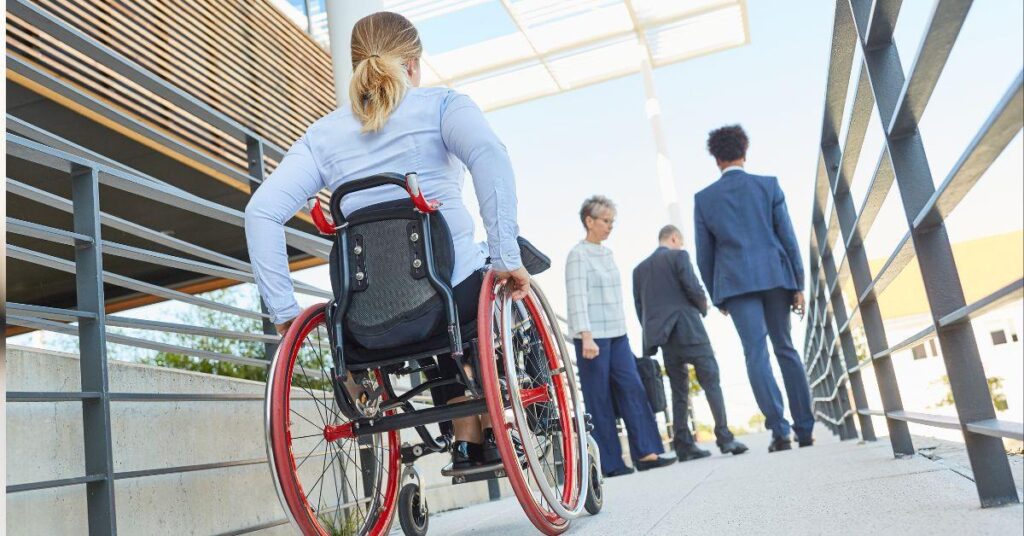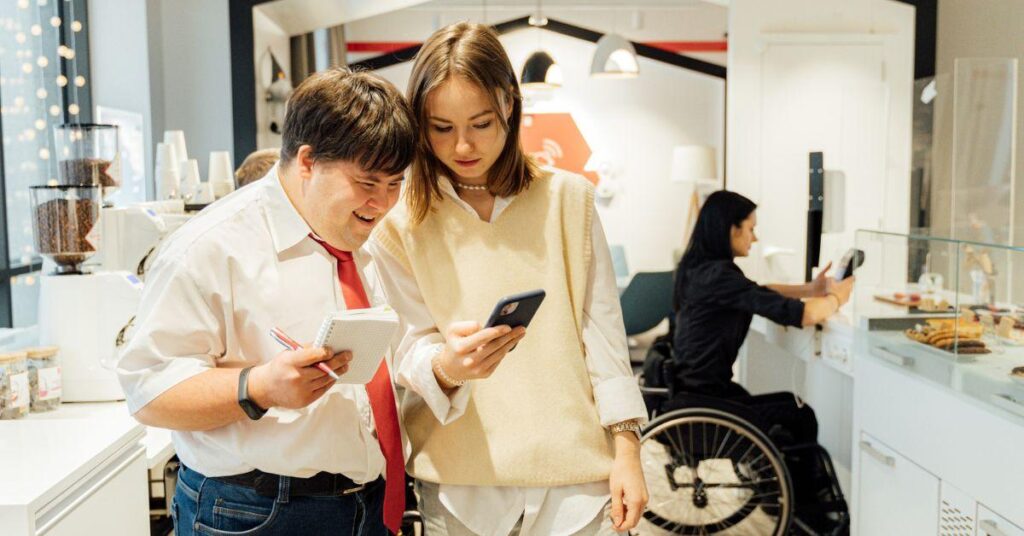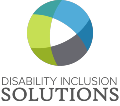National Disability Employment Awareness Month (NDEAM) is a time to recognize the benefits of employing people with disabilities and promote equal employment opportunities. This year’s theme, “advancing access and equity,” underscores the importance of creating inclusive workplaces. One powerful way to achieve this is through Universal Design. UD ensures that products, environments, and services are accessible to the greatest number of people. In the workplace, UD initiatives can significantly enhance social interaction and foster a more diverse and inclusive atmosphere.

Here are four UD projects companies can consider for NDEAM:
- Conduct A UD Audit of Your Workplace: This assessment goes beyond a compliance check. A UD audit involves assessing the inclusiveness of your workplace and identifying areas that may hinder employees with and without disabilities from fully participating in the workplace. The insights from a UD audit will empower your organization to make targeted improvements, paving the way for a more inclusive and equitable workplace. Key aspects of an audit include evaluating the physical environment, assessing the communication systems, and reviewing the technology infrastructure.
- Provide Training on UD Principles: UD principles lay the foundation for creating spaces, materials, and experiences that can be accessed and used by the greatest number of people. Training on UD principles educates your workforce about the importance of accessibility and equips them with the knowledge to identify barriers. Such training can be a catalyst for change within your organization, sending the message that your company is committed to creating a workspace where every individual can thrive
- Design A More Inclusive Workspace: Your physical workspace plays a fundamental role in fostering inclusivity and accessibility. By reassessing its design, you can create an environment that boosts the comfort and productivity of your employees and sends a powerful message about your commitment to diversity. Key changes may include improved wayfinding, contrasting colors and textures, widening doorways, providing adjustable desks and chairs, and creating quiet spaces for employees who need them.
- Upgrade Your Workplace Technology: Access to technology is vital for employees to perform their roles effectively and successfully. However, different employees have different requirements for technology, so it’s critical to upgrade and customize workplace technology to make it more universally accessible. This can include providing assistive technology devices, ensuring computer software, documents and websites are accessible, investing in screen readers, voice recognition software, and training employees on using accessible technology.

Universal Design plays a pivotal role in creating inclusive environments. By embracing these initiatives, you can create an environment that values diversity, promotes equity, and fosters innovation. Ready to get started? Take the UD quiz. Then, my team and I can guide you every step of the way to ensure your projects align with best practices.
Schedule a consultation with me on Calendly.
https://calendly.com/andy-houghton/15min/





0 Comments